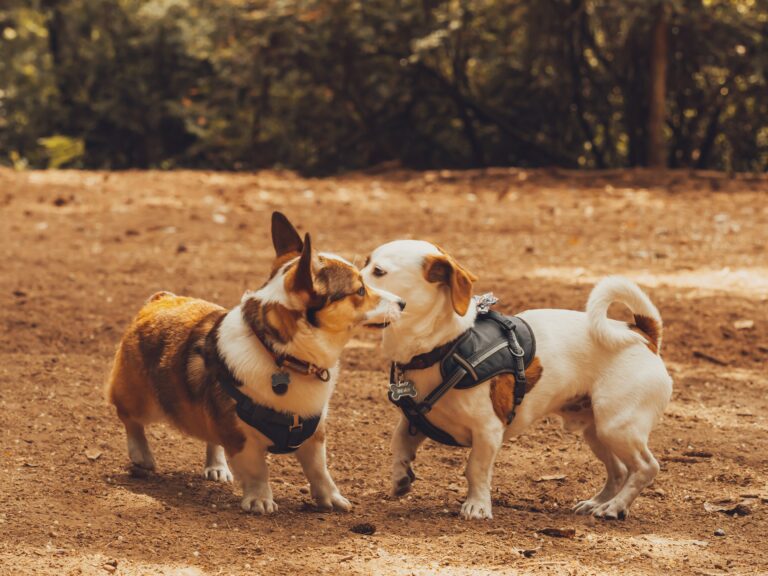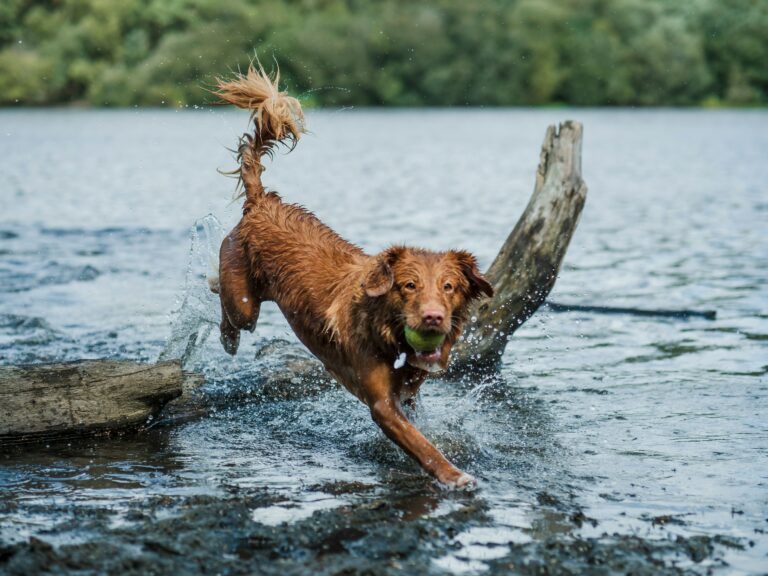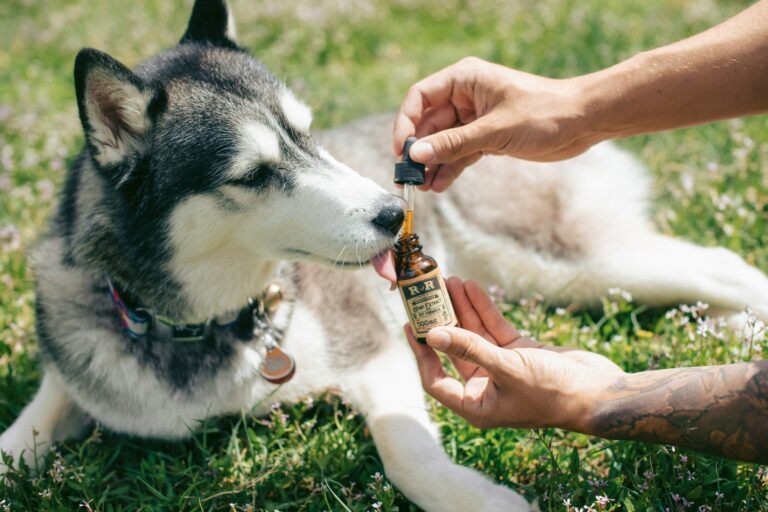A Guide to Understanding How Dogs See Color
A Guide to Understanding How Dogs See Color
A Guide to Understanding How Dogs See Color: How it Impacts Their Perception, Toy Preferences, and Practical Applications for Dog Owners.
Overview of Dogs’ Color Vision
Dogs’ color vision is not just about the ability to see yellow and blue hues; it is also deeply intertwined with their evolutionary and ecological adaptations. For instance, dogs’ dichromatic vision, compared to humans’ trichromatic vision, plays a crucial role in how they navigate their surroundings and engage with their environment. This unique color perception influences various aspects of dogs’ lives, from their play preferences to their hunting and survival strategies, making it a fundamental aspect of their sensory experience.
Moreover, dogs’ color vision is not just a matter of aesthetics but has practical implications for dog owners. By recognizing the limitations and strengths of dogs’ color vision, pet owners can make informed choices when selecting toys, designing living spaces, and creating engaging activities for their canine companions. For example, opting for blue toys when playing outdoors can enhance visibility for dogs against green backgrounds, potentially making playtime more enjoyable and stimulating for them. Understanding the intricate details of dogs’ color vision can lead to a more tailored and fulfilling experience for both pets and their owners alike.
How Dogs Perceive Color
Dogs’ eyes contain more rod cells than cone cells, contributing to their superior vision in dim lighting and their keen motion detection skills. This unique ocular composition allows dogs to excel in activities such as hunting and tracking, where the ability to spot movement is crucial. An example of this is when a dog easily tracks a ball thrown in a dimly lit room, showcasing their remarkable visual acuity.
Moreover, while dogs are not completely color blind, their color vision is dichromatic, unlike humans who have trichromatic vision. This means that dogs can see a more limited color range, with red appearing as a dark brownish-gray and green as yellowish. A practical example of this is when a dog may struggle to differentiate between a red and green toy, leading them to rely more on other sensory cues like smell or sound to identify the object. This unique color perception impacts their interaction with the environment and influences their preferences for toys and objects in blue and yellow hues.
Comparison with Human Color Vision
When comparing dogs’ color vision to humans, it becomes evident that dogs have a more restricted color perception capability. Humans possess three types of color receptors, known as cones, enabling them to detect a broad range of colors across the spectrum. In contrast, dogs only have two types of cones, limiting their color vision to shades of yellow and blue.
Moreover, the evolutionary adaptations in dogs have equipped them with enhanced night vision capabilities. Dogs have a higher concentration of rod cells in their retinas, which are particularly useful in low-light conditions. Additionally, the tapetum lucidum, a reflective layer behind their retinas, aids in maximizing light detection, contributing to their ability to see in dimmer light compared to humans. This unique feature allows dogs to excel in activities such as hunting during dawn or dusk when light levels are suboptimal.
Understanding the distinctions in color perception and night vision between dogs and humans sheds light on how dogs navigate their surroundings. While humans rely heavily on color cues for various tasks, dogs prioritize motion detection and contrast. These differences emphasize the diverse sensory experiences of dogs and humans, highlighting the importance of tailoring interactions and environments to accommodate these contrasting perceptual abilities.
 Influence on Dogs’ Toy Preferences
Influence on Dogs’ Toy Preferences
Dogs’ color vision plays a crucial role in shaping their preferences for specific toys. For instance, due to their ability to perceive blue and yellow hues more vividly than other colors, toys in these shades stand out to them, making them more visually appealing, especially when placed in surroundings where other colors might not be as easily distinguished. As a result, dogs are naturally drawn to toys that are blue or yellow, showcasing a clear preference based on their color vision capabilities.
Moreover, dogs not only rely on color but also on other sensory cues when selecting toys. They are particularly fond of toys that are in motion, emit sounds, or have unique scents, as these elements add layers of stimulation to their play experiences. This multi-sensory approach to toy preferences underlines the intricate way in which dogs interact with their environment, utilizing various senses to engage with their surroundings effectively.
By understanding and aligning with a dog’s color vision and sensory preferences, pet owners can curate a more enriching playtime for their canine companions. Choosing toys that cater to dogs’ color vision and sensory needs can significantly enhance their overall engagement and enjoyment during play sessions, creating a fulfilling and stimulating experience for the furry friends.
Evolutionary Significance of Color Vision
The evolution of dogs’ color vision is a fascinating adaptation that has been finely tuned to their natural behaviors and surroundings. For instance, in the wild, dogs rely heavily on their vision to hunt, track prey, and detect potential threats. This reliance on visual cues has influenced the development of their dichromatic vision, enabling them to effectively navigate and survive in diverse habitats. By honing in on specific colors like blue and yellow, which are most prominent in their color spectrum, dogs have optimized their visual capabilities for tasks essential to their survival.
Furthermore, the evolutionary significance of dogs’ color vision extends beyond mere visual acuity. It is a testament to how intricately their sensory abilities are intertwined with their ecological niche and lifestyle as social carnivores. For instance, the preference for blue and yellow toys stems from their innate ability to perceive these colors vividly against various backgrounds, a trait that has likely been honed through generations of evolutionary selection. This adaptation speaks volumes about the remarkable ways in which dogs have evolved to thrive in their environments, shedding light on the complex interplay between genetics, behavior, and survival strategies in the animal kingdom.
 Practical Applications for Dog Owners
Practical Applications for Dog Owners
Understanding how dogs perceive colors can significantly impact how owners can enhance their pets’ play experiences. Off Leash K9 Training 30A knows that play time is just as important as training time. By selecting toys primarily in blue and yellow hues, which are more visually appealing to dogs due to their dichromatic vision, owners can actively engage their pets during playtime. For instance, a study showed that dogs were more attracted to and interacted longer with blue toys compared to red or green ones, showcasing the importance of color in their visual stimulation. Furthermore, introducing toys with various textures and scents can further enrich the sensory experience for dogs, providing them with a multi-dimensional play environment that aligns with their natural inclinations.
Moreover, considering dogs’ color vision limitations when choosing toys can not only enhance their engagement but also contribute to their overall well-being. For example, by incorporating blue toys in outdoor settings against the green grass, owners can ensure better visibility for their pets, promoting active play and exploration. This thoughtful selection of toys tailored to dogs’ color vision can foster a more enjoyable and mentally stimulating playtime for the pets, aligning with their sensory needs and preferences. Ultimately, by accommodating dogs’ unique visual abilities through toy choices and environmental considerations, owners can create a fulfilling and enriching experience that supports their pets’ physical and mental health.



 Influence on Dogs’ Toy Preferences
Influence on Dogs’ Toy Preferences
 Practical Applications for Dog Owners
Practical Applications for Dog Owners




